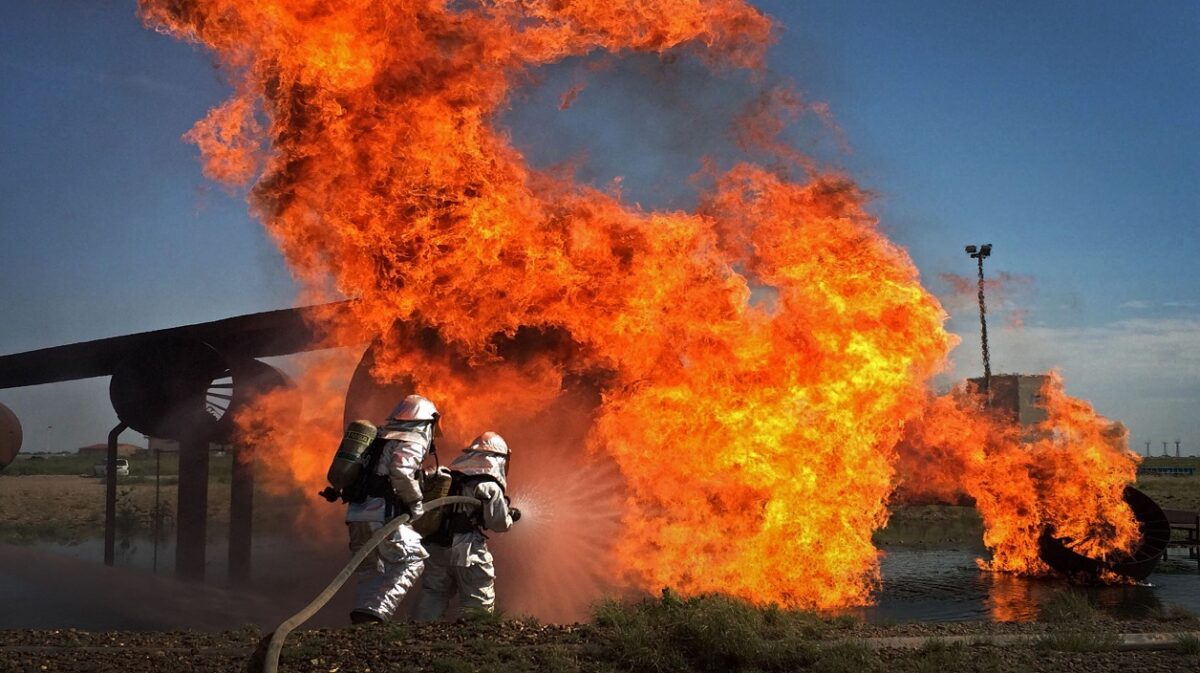By Susan Morée
New Mexico is holding the U.S. Department of Defense responsible for PFAS contamination found in record-setting levels in animals and plants around Holloman Lake as the state advises hunters who consumed waterfowl there from 2010 to 2014 to see a health professional.
The New Mexico Environment Department issued a health advisory on Monday after releasing a report that found a world record-level setting high of PFAS contamination in a Salt Cedar tree and some of the highest levels of PFAS contamination found in mammals in two Merriam’s kangaroo rats. The Salt Cedar tree sample contained 30,000 nanograms per gram (ng/g). Scientists found 120,000 ng/g and 110,000 ng/g in the liver of two Merriam’s kangaroo rats.
There are currently no federal standards established for animals or soil.
Drew Goretzka, spokesperson for the agency, said it is advising anyone who may have consumed waterfowl from Holloman Lake to contact their health provider.
“While no medical treatments exist to remove PFAS from the body, there are blood tests available to find out what your levels are,” he said.
New Mexico Department of Environment Secretary James Kinney called the report “a stark reminder” that the U.S. Department of Defense needs to take responsibility.
“We must double down on our demand of the U.S. Air Force to cleanup PFAS in our state while telling manufacturers who pour PFAS-laden consumer goods into New Mexico homes — do better,” Kinney said.
An Air Force Installation and Mission Support spokesperson said drinking water sources for both the base and Alamogordo have not been affected by the PFAS contamination and that the base is “executing environmental response investigations” to identify and take immediate action if drinking water is impacted by PFAS associated with the base’s activities.
“The Air Force with input from regulators and the public will determine how to address impacts to wildlife. Our investigations are helping protect human health while also providing the data needed to develop long-term environmental solutions to PFAS risk, as needed. We remain committed to fulfilling our cleanup obligations, collaborate with regulators, and transparency in our efforts,” the spokesperson, who did not identify themselves, said.
PFAS contamination can cause certain cancers and lead to higher cholesterol levels as well as lower birth weight and high blood pressure during pregnancy. Studies on animals have shown PFAS contamination impairment in reproduction and development.
PFAS has been found in some firefighting foams, water resistant clothing, stain resistant carpeting and other common household materials. But the state says, based on earlier investigations into soil and groundwater around the base, the high contamination levels found around Holloman Lake are due to firefighting training that took place near Holloman Air Force Base and an evaporation pond the base used to test firefighting equipment.
Another source of the contamination likely occurred through a leaking sewer system and contaminated wastewater discharged into unlined sewage lagoons and eventually to the lake prior to 1996. After 1996 the base sent treated wastewater that also contained PFAS to a lagoon that eventually reached the lake, according to the state.
Scientists found high levels of contamination in bird eggs and in a hatchling found dead next to the nest near the lake. The state has also expressed concern about what it calls a very high rate of nesting failure for shorebirds around the lake.
Jesse Deubel, executive director of New Mexico Wildlife Federation, told NM Political Report that “this issue really emphasizes the importance of every single hunter for pure natural protein from a natural source needs to be an environmentalist.”
“Issues like this clearly illustrate why everybody has to get involved in being proper stewards of the natural environment,” Deubel said.
He said the health advisory causes concern for hunters who have not necessarily hunted around Holloman Lake, citing the hooved game population. He said he wonders if those animals are eating grass that could contain PFAS contamination around the lake, if they could then move on to other areas of New Mexico.
“This issue is just the tip of the iceberg. That’s where my thought process goes,” Deubel said.
In addition to sampling various birds, mammals and plants found around the lake, the state took samples from a coyote and a western coachwhip, which is a type of snake, killed by traffic on Highway 70 near the turnoff to the lake. The necropsy found the coyote had 640 ng/g of PFAS contamination in its muscle and the western coachwhip had 6,800 ng/g of PFAS contamination in its liver.
Goretzka said the agency has the same concerns about the potential for animals to spread the contamination much further.
“Specifically, we’re concerned about the risk of PFAS-contaminated birds from Holloman Lake flying into other areas of the state and the broader West. That’s why we’ve advised hunters to not consume any game that may be associated with Holloman Lake migratory paths,” Goretzka said.
The lake is an Audubon-designated Important Bird Area. Bird watchers have recorded as many as 252 bird species at the lake and thousands land there for at least part of the year. The state said 41 of those bird species are game species that can be legally hunted.
Up until 2023, the state allowed hunting at the lake during certain times of the year. But because of mounting evidence of PFAS contamination in the area, hunting was no longer permissible starting in 2024.
Update: This story has been updated to include a response from the U.S. Air Force


Leave a comment